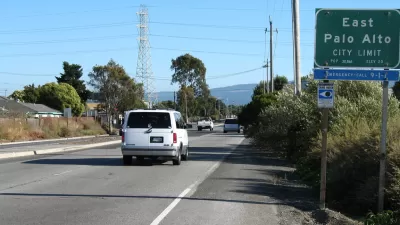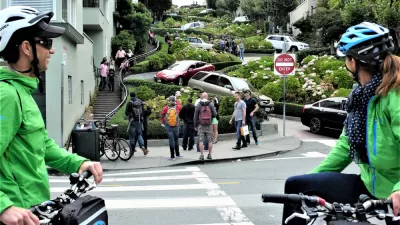With Los Angeles now planning to install HOT lanes, a pair of recent articles in the L.A. Times question whether congestion pricing is a way to help the rich at the expense of the poor, or a practical solution to traffic congestion and its ills.
Tim Rutten questions the fairness of charging for access to carpool lanes, and accuses local officials of embracing congestion pricing simply due to the availability of federal funding.
"When the Metropolitan Transportation Authority voted Thursday to convert carpool lanes to toll routes on as many as three Los Angeles freeways, the question of just what that decision begrudges to whom was lost in a flurry of self-congratulation.
Los Angeles Mayor Antonio Villaraigosa called the move "a great opportunity to think outside the box," and added: "Part of the reason Los Angeles has not been able to grapple with gridlock is because we've been unable to make the tough decisions."
Right. It takes unconventional and courageous thinking to come up with a plan that clears a highway lane for the well-off, while the middle class and working poor are left to inhale each other's $5-a-gallon exhaust fumes."
However, transit consultant Michael Eshleman responds that the plan simply ensures that drivers pay the full costs, and will encourage residents to revisit decisions about where they live and work.
"It helps to compare freeways to restaurants to understand their shortcomings. Like freeways, most restaurants experience "peak hours," when demand outstrips supply. These periods are typically brief (a few hours at a time), and often the rest of the day there is a glut of capacity.
Congestion pricing will encourage those unwilling or unable to pay to use toll roads to either change their address or change their commuting behavior. This policy will affect the pocketbooks of the poor more acutely than the wealthy, should they decide to drive in the toll lanes. But driving in general already brings with it an exorbitant cost of entry for low-income people: One must purchase an expensive vehicle, insure it, register it, maintain it and purchase fuel for it. And it should be noted that this policy will primarily affect single-occupant low-emissions vehicle owners and carpoolers (though carpoolers will pay a reduced rate). This policy will improve mobility for buses and those willing to pay the toll. Those who do not want to pay are still perfectly free to use general-purpose lanes and do what they currently do: sit in traffic."
FULL STORY: Taking the 'free' out of freeway

Maui's Vacation Rental Debate Turns Ugly
Verbal attacks, misinformation campaigns and fistfights plague a high-stakes debate to convert thousands of vacation rentals into long-term housing.

Planetizen Federal Action Tracker
A weekly monitor of how Trump’s orders and actions are impacting planners and planning in America.

San Francisco Suspends Traffic Calming Amidst Record Deaths
Citing “a challenging fiscal landscape,” the city will cease the program on the heels of 42 traffic deaths, including 24 pedestrians.

Defunct Pittsburgh Power Plant to Become Residential Tower
A decommissioned steam heat plant will be redeveloped into almost 100 affordable housing units.

Trump Prompts Restructuring of Transportation Research Board in “Unprecedented Overreach”
The TRB has eliminated more than half of its committees including those focused on climate, equity, and cities.

Amtrak Rolls Out New Orleans to Alabama “Mardi Gras” Train
The new service will operate morning and evening departures between Mobile and New Orleans.
Urban Design for Planners 1: Software Tools
This six-course series explores essential urban design concepts using open source software and equips planners with the tools they need to participate fully in the urban design process.
Planning for Universal Design
Learn the tools for implementing Universal Design in planning regulations.
Heyer Gruel & Associates PA
JM Goldson LLC
Custer County Colorado
City of Camden Redevelopment Agency
City of Astoria
Transportation Research & Education Center (TREC) at Portland State University
Jefferson Parish Government
Camden Redevelopment Agency
City of Claremont





























